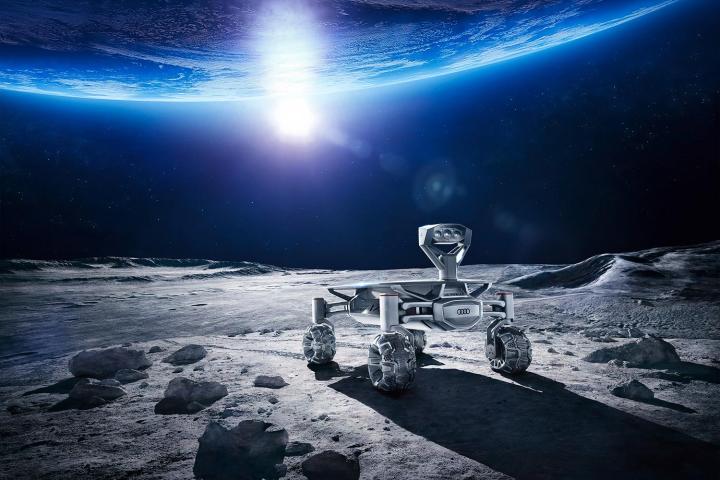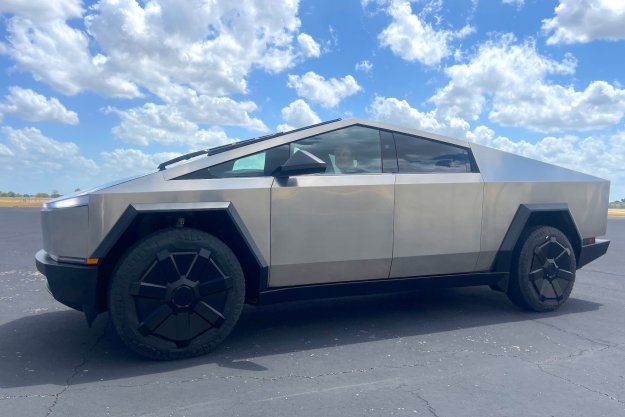
Part-Time Scientists has booked a rocket from Spaceflight Inc. to deliver the rover, called the Audi Lunar Quattro, to the Moon late next year. The carmaker hooked up with Part-Time Scientists, which is a group of 35 engineers spread across three continents, in an effort to win the $30 million Google Lunar XPrize, which goes to the first private team that can get a rover to the Moon, remotely drive it at least 500 meters (164 feet), and send back high-resolution images.
A group of 16 Audi employees have been collaborating with Part-Time Scientists since the partnership was announced last year. Over the past few months, they’ve refined the rover design by enlarging both the vehicle and its wheels, which increases stability, according to Audi. The larger contact patch of the bigger wheels should also increase traction. Engineers also managed to shave 8 kilograms (17 pounds) through “an optimum mix of materials,” as well as 3D printing.
The Audi Lunar Quattro will use four cameras to navigate on the Moon, and to take 360-degree photos to send back to Earth. Like most Earth-bound Audis, the Lunar Quattro is all-wheel drive, thanks to electric motors in each of its wheels. Audi previously quoted a top speed of 3.6 kph (2.2 mph). Slow and steady wins this race, apparently.
A landing module called Alina will actually carry two Lunar Quattro rovers, plus research equipment from other entities, including NASA, the European Space Agency (ESA), and Wikipedia. The lander will touch down near the 1972 landing site of Apollo 17, the last manned mission to reach the Moon. Audi is hoping for a group photo with the Apollo 17 lunar rover that was left at the site when the crew returned to Earth.
Significant testing still needs to be done prior to launch, including stress testing of the Audi rovers and the lander. The entire mission will also be simulated in the Middle East to work out any bugs. When it does launch late next year, it’s possible that the Audi rovers could be lifted aloft by a rocket booster from Elon Musk’s SpaceX. That would be a bit of an ironic twist, given how Musk’s Tesla electric cars are now a thorn in Audi’s side.
Editors' Recommendations
- NASA: Next lunar rover ‘won’t be your grandad’s moon buggy’
- Audi TT will get the ax to make way for electric cars — and the R8 may be next


